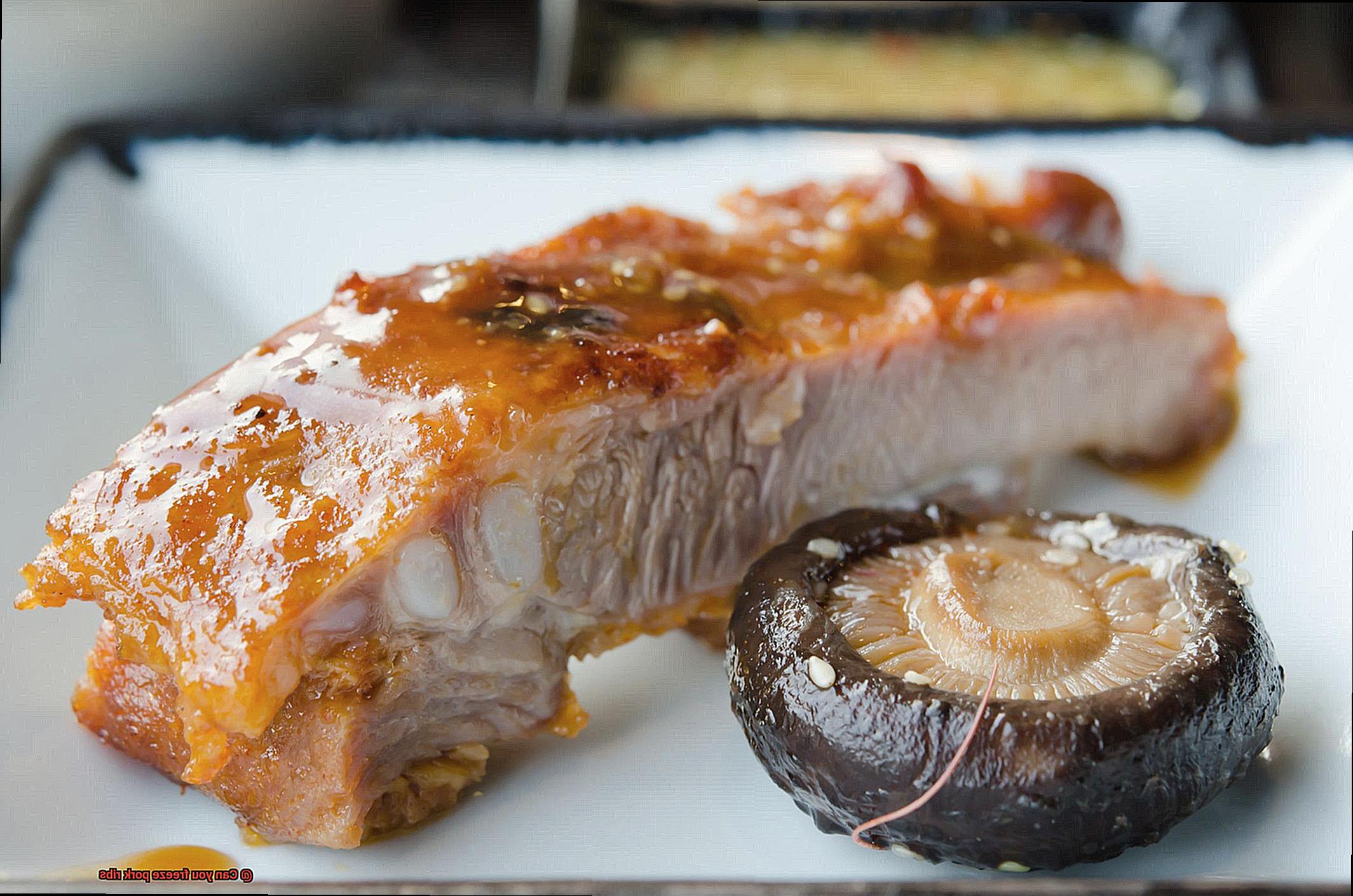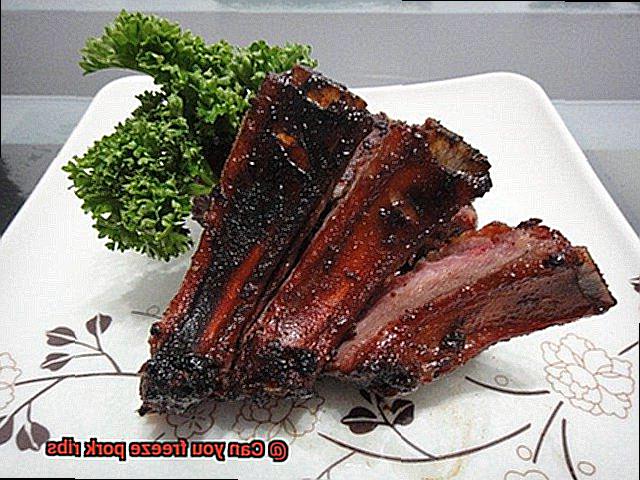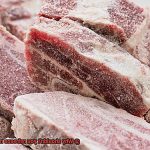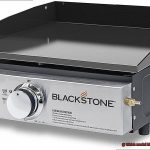Do you love indulging in the succulent and juicy flavors of pork ribs? Are you often left with leftovers that you’re unsure what to do with? Fear not, we’ve got an answer to your pressing question – can you freeze pork ribs?
Pork ribs are a popular dish that can be enjoyed in various ways – grilled, barbecued, or baked in the oven. And let’s be real, it’s almost impossible to resist having a few extra pieces. But there’s only so much we can eat in one sitting. So, can leftover pork ribs be frozen and reheated later?
The good news is yes; pork ribs can be frozen and reheated surprisingly well while maintaining their original texture and flavor. However, proper freezing techniques are crucial to ensure their safety and quality.
In this blog post, we’ll explore the process of freezing pork ribs, including the best methods for packaging and reheating them. We’ll also touch on important safety aspects of freezing meat and answer some frequently asked questions about the process.
So whether you’re meal prepping for the week or saving some leftovers for a rainy day, sit back, relax, and let’s dive into the world of freezing pork ribs.
Contents
What Are Pork Ribs?
Pork ribs are a tantalizing cut of meat that many people crave. These ribs come from the ribcage of a pig and are appreciated for their delectable, tender meat. Whether you prefer to grill, smoke or bake your pork ribs, they are sure to satisfy your taste buds. Let’s dive into what pork ribs are and explore the different types of pork ribs available.
There are three types of pork ribs: baby back ribs, spare ribs, and St. Louis-style ribs. Baby back ribs are sliced from the upper part of the ribcage, and while they have less meat than other cuts, they’re known for their succulent flavor. These ribs are slightly curved and shorter than other rib cuts, making them perfect for grilling or smoking.
Spare ribs are the meatiest of the three types of pork ribs and come from the lower part of the ribcage. They’re tougher than baby back ribs but can be baked in the oven or slow-cooked on a grill or smoker. If you want a more flavorful cut with plenty of meat, then spare ribs are an excellent choice.
St. Louis-style ribs are a trimmed-down version of spare ribs, with a more rectangular shape. They’re perfect for those who love a meatier rib cut with plenty of flavor. Like baby back and spare ribs, St. Louis-style ribs can be grilled or baked in the oven.
If you want to preserve your pork ribs for future use, freezing is an excellent option. However, correct preparation is crucial to ensure their safety and flavor. It’s best to season your pork ribs before freezing them to ensure that the flavors are well incorporated.
When freezing pork ribs, wrap them tightly in plastic wrap or aluminum foil to prevent air from getting inside. Then, place the wrapped ribs in a freezer-safe container or freezer bag and label it with the date and contents.
When it’s time to thaw and cook the frozen pork ribs, it’s recommended to thaw them in the refrigerator overnight. This will ensure that they thaw evenly and remain safe to eat. Once thawed, you can grill or reheat the ribs as desired.
Can You Freeze Pork Ribs?
The answer is a resounding yes. As an expert on the matter, let me provide some helpful tips to ensure that your ribs maintain their quality and flavor after being frozen.
The first step in freezing pork ribs is to properly prepare them. This means removing any excess fat or membrane and seasoning them to your liking. Once they are ready, wrap them tightly in plastic wrap or aluminum foil to prevent freezer burn. For added protection, place the wrapped ribs in a freezer-safe bag.
When it comes to freezing pork ribs, time is of the essence. The longer your ribs sit in the fridge before freezing, the more likely they are to lose their flavor and texture. Therefore, it is best to freeze them as soon as possible after purchasing or preparing them.
While pork ribs can typically be stored in the freezer for up to six months, keep in mind that the longer they are frozen, the more likely they are to lose their quality. So, if you plan on freezing your ribs, aim to use them up within three months.
Now, let’s talk about thawing those mouthwatering ribs. The best way to do so is slowly in the refrigerator. Depending on the size of your ribs, it could take anywhere from 24-48 hours. Never try to thaw pork ribs at room temperature or in warm water, as this can lead to bacterial growth and potential foodborne illness.
Preparing Pork Ribs for Freezing
Do you toss them out or let them sit idly in the fridge until they’re no longer edible? Don’t worry, my meat-loving friends. I’m here to share with you the steps for properly preparing pork ribs for freezing to ensure that they stay fresh, flavorful, and ready to eat whenever you want.

The first step is crucial: clean and trim the pork ribs of any excess fat or membrane. This not only makes them more visually appealing but also ensures that the flavors are evenly distributed during cooking. Once you’ve trimmed the ribs, it’s time to add some flavor.
Seasoning your pork ribs is key to enhancing their natural taste and making them even more delectable. Whether you prefer a dry rub or marinade, make sure to let the ribs marinate for at least 30 minutes before freezing. This will allow the meat enough time to absorb all those mouth-watering flavors and become tender.
After marinating, wrap those tasty morsels up tightly in plastic wrap or aluminum foil to prevent freezer burn. Nobody wants to bite into a dry, flavorless rib. Freezer burn occurs when air comes into contact with food, causing it to dry out and develop ice crystals. To avoid this, place the wrapped ribs in a freezer-safe ziplock bag or airtight container. Don’t forget to label the packaging with the date of freezing and contents so you can keep track of how long they’ve been stored.
Now, let’s talk about thawing. The safest way to thaw frozen pork ribs is by transferring them from the freezer to the refrigerator and letting them thaw overnight. This method ensures that the meat thaws evenly and prevents any potential bacterial growth that can occur when meat is left at room temperature for too long.
How to Freeze Pork Ribs
Freezing pork ribs is an excellent way to preserve leftovers or stock up for future meals. However, improperly frozen ribs can result in freezer burn, loss of flavor, and a tough, chewy texture. Here are some tips to help you freeze pork ribs like a pro.
Choose Fresh, High-Quality Pork Ribs
When selecting pork ribs to freeze, choose fresh meat that hasn’t been previously frozen. Look for cuts with a good amount of marbling, which will help keep the meat moist during freezing and thawing. If you’re unsure about the freshness of your ribs, it’s always better to err on the side of caution and avoid freezing them.
Prepare Your Ribs for Freezing
Before freezing your pork ribs, trim any excess fat or connective tissue from the meat. These bits can become chewy and tough when frozen, so it’s best to remove them beforehand. Season your ribs with your desired spices and seasonings, but go easy on the seasoning as flavors can intensify during freezing.
Wrap Your Ribs Tightly
To prevent freezer burn and preserve flavor, wrap your seasoned pork ribs tightly in plastic wrap or aluminum foil. Be sure to remove as much air as possible from the packaging before sealing it up. Consider double-wrapping them for added protection and place them in a freezer-safe plastic bag.
Label Your Ribs
It’s essential to label your frozen pork ribs with the date they were frozen so you can keep track of their freshness. When stored correctly in the freezer, pork ribs can last up to six months without losing their flavor or texture.
Thaw Your Ribs Slowly
When it comes time to thaw your frozen pork ribs, do so slowly in the refrigerator. Thawing at room temperature or in warm water can promote bacterial growth and lead to foodborne illness. Depending on the size and thickness of your ribs, this process could take several hours to overnight.
Thawing Frozen Pork Ribs
With proper thawing techniques, you can have your meat cooked to perfection. As an expert in this area, I’m here to share with you the best ways to thaw your frozen pork ribs and get them ready for the grill.
First and foremost, it’s important to select high-quality pork ribs with good marbling and prep them accurately before freezing. This means trimming excess fat, seasoning lightly, wrapping them tightly in plastic or foil, and labeling them with the date of freezing. Once frozen, they can be stored for up to six months.
When it comes to thawing your frozen pork ribs, two methods are highly recommended: refrigerator thawing and cold water thawing.
Refrigerator thawing is the slowest but safest method. Simply place the frozen ribs on a plate or tray and let them defrost in the refrigerator overnight. This gradual thawing process helps retain moisture and flavor while reducing the risk of bacterial growth.
If you’re short on time, cold water thawing is a quicker option. Place the frozen ribs in a leak-proof bag and submerge them in cold water. Change the water every 30 minutes until they are completely thawed. This method requires more attention and monitoring but is still safe as long as you keep the temperature of the water below 40°F.
Remember, never use hot water or leave the ribs at room temperature to thaw as this can promote bacterial growth and compromise food safety. Always plan ahead and give yourself enough time for proper thawing.
Once your pork ribs are fully thawed, they should be cooked immediately or kept refrigerated until ready to use. For a mouth-watering experience on the grill, try seasoning your thawed pork ribs with your favorite spices or marinade before cooking.
Reheating Frozen Pork Ribs
We have gathered the most efficient and mouth-watering methods for reheating your beloved pork ribs without sacrificing their taste and texture.
First off, let’s rule out using a microwave. It might seem like an easy option, but it can ruin your meat, making it tough and dry. Instead, opt for either an oven or grill to bring your frozen pork ribs back to life.
For oven reheating, preheat your oven to 250°F. Place the ribs on a baking sheet and cover them with foil. Bake for 20-30 minutes or until the internal temperature of the meat reaches 165°F. This gentle heating process ensures that your ribs are heated evenly without drying out.
Alternatively, if you prefer the smoky flavor that grilling provides, start by preheating your grill to medium heat. Once heated, place the frozen ribs on the grill and cook for approximately 10-15 minutes per side. To add extra flavor, baste the ribs with your favorite barbecue sauce during the last few minutes of cooking.
It is crucial to monitor the internal temperature of the meat to ensure that it’s safe to eat. Plus, if you plan on freezing leftover cooked ribs, wrap them tightly in foil or plastic wrap before placing them in an airtight container or freezer bag to prevent freezer burn.
The Effects of Freezing on the Texture and Flavor of Pork Ribs
As an expert on this topic, let me walk you through the ins and outs of freezing pork ribs.
Texture is a critical factor when it comes to enjoying pork ribs. Freezing can cause ice crystals to form, which may damage the muscle fibers and result in a tougher texture. However, with proper preparation, you can preserve the tenderness of the meat. Before freezing, make sure to pat the ribs dry and season them with your desired spices. Wrapping them tightly in plastic wrap or aluminum foil and storing them in a freezer-safe container can also help prevent freezer burn.
Now, let’s talk about flavor. Surprisingly, freezing doesn’t necessarily compromise the taste of the meat. In fact, some argue that it can enhance the flavor by allowing the seasoning to penetrate deeper into the meat during the thawing process. So don’t worry too much about losing that delicious flavor you worked so hard to achieve.
To ensure maximum deliciousness when reheating frozen pork ribs, it’s recommended to thaw them slowly in the refrigerator rather than using a microwave or hot water. This helps maintain the integrity of the meat and prevent overcooking. If you’re short on time, then thawing pork ribs in cold water is a viable option.
Storing Frozen Pork Ribs for Maximum Shelf Life
Freezing is a great option, but it requires proper packaging to prevent freezer burn and maintain top-quality taste and texture.
To ensure your frozen pork ribs stay fresh, wrap each rack tightly in plastic wrap or aluminum foil before placing them in a resealable freezer bag or airtight container. It’s essential to label the package with the date, so you don’t lose track of how long they’ve been frozen.
While frozen pork ribs can technically last indefinitely if kept at 0°F or below, their quality will start to decline after six months. Thus, it’s best to consume frozen pork ribs within six months of freezing them for optimal deliciousness.
When thawing those frozen pork ribs, avoid rushing things. Slowly thawing them in the refrigerator is the safest way to go and will prevent any bacterial growth that could occur if the meat is left out at room temperature for too long.
In summary, follow these golden rules to enjoy mouth-watering pork ribs for up to six months after freezing:
- Properly package your pork ribs by wrapping each rack tightly in plastic wrap or aluminum foil before placing them in a resealable freezer bag or airtight container.
- Label your package with the date to keep track of how long they’ve been frozen.
- Consume frozen pork ribs within six months of freezing them for optimal deliciousness.
- Thaw your frozen pork ribs slowly in the refrigerator to avoid bacterial growth and maintain their quality.
h6nXw8DFCQA” >
Conclusion
In conclusion, freezing pork ribs is a smart and convenient way to keep your leftovers fresh or stock up for future meals. By following the right preparation and storage techniques, you can ensure that your frozen pork ribs retain their quality and flavor for up to six months. It’s important to start with fresh, high-quality pork ribs, trim excess fat, season lightly, wrap tightly in plastic or foil, label with the date of freezing, and store in a freezer-safe container.
When it’s time to thaw your frozen pork ribs, take it slow by using the refrigerator or cold water thawing methods. Avoid using hot water or leaving the ribs at room temperature as this can promote bacterial growth and compromise food safety.
Reheating frozen pork ribs is best done in an oven or on a grill. Microwaving them can ruin the texture of the meat. To ensure that they’re safe to eat, monitor the internal temperature of the meat while reheating.
Freezing may cause ice crystals to form which could damage muscle fibers and result in a tougher texture. However, with proper preparation and seasoning before freezing, you can preserve tenderness and enhance flavor.
To sum it up nicely, here are some golden rules for freezing pork ribs: package properly, label with the date of freezing, consume within six months of freezing for optimal deliciousness, thaw slowly in the refrigerator or using cold water thawing methods only, reheat carefully either in an oven or on a grill while monitoring internal temperature.






